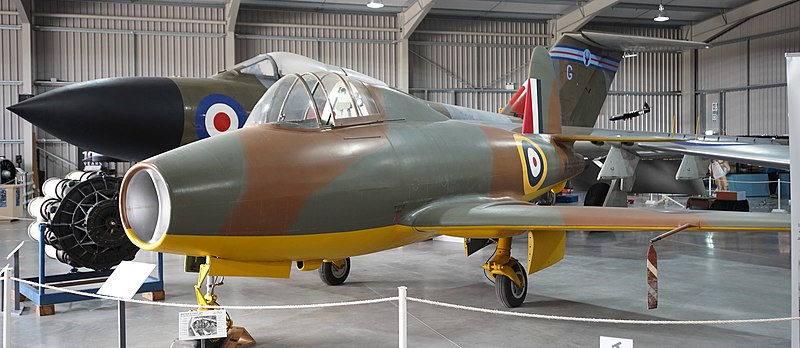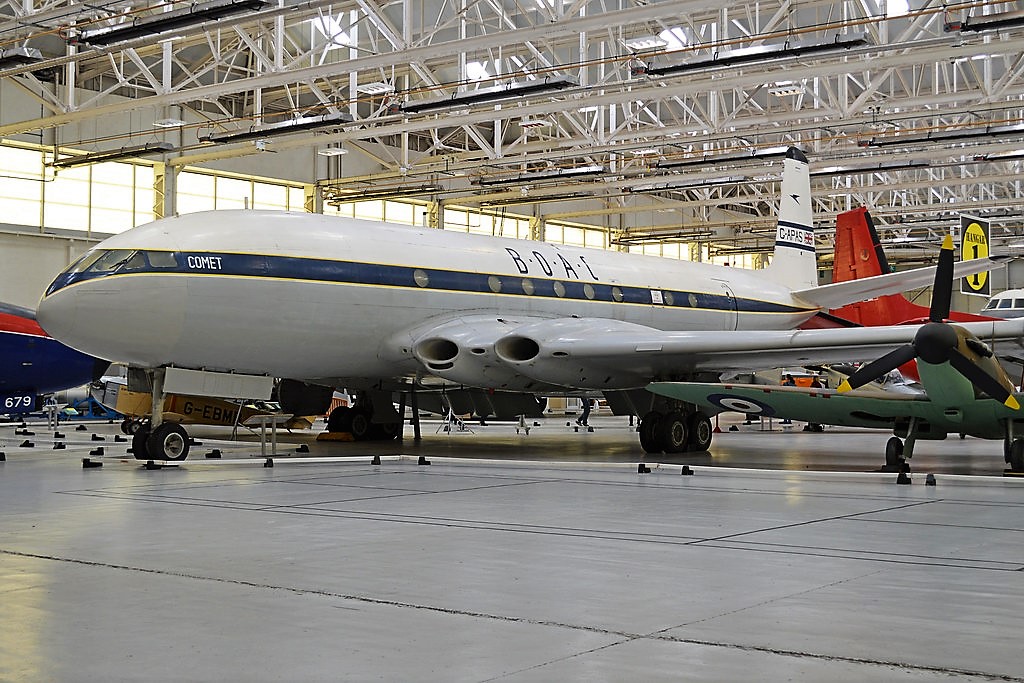


95 years ago in 1928, a young RAF cadet at the RAF College Cranwell submitted a paper to his tutors showing the design of a usable jet engine. That cadet was Frank Whittle.

The principle of the jet engine wasn’t new, the first principles of a gas turbine being described back in 1884 by Charles Parsons in a patent application for a steam turbine, but making one that might actually work was new. The officers at Cranwell passed Whittle’s paper up to the Air Ministry but they however were not really interested and argued that Whittle had made errors in his calculations and such an engine would not be suitable for aircraft, thus Whittle’s work was not pursued. Whittle and his friends saw things differently and a patent was later taken out on his design. By 1935 the patent was up for renewal but Whittle couldn’t afford the £5 required ! Two ex RAF officers approached him and the trio agreed to start a company to develop the Whittle jet idea, this company would become the famous Power Jets Ltd. In 1937 the prototype Whittle engine was test run and by 1939 the Air Ministry had changed its mind and given Power Jets a contact to develop an engine suitable for use in an aircraft, however the Rover car company was given the contract to build it.

Research had also been going on in Germany with Hans Von Ohain starting work on a jet design in 1933 and three years later he offered his engine to the Heinkel company. The engine was first tested in 1937. Under great secrecy it was the Heinkel company with their He178 that flew the world’s first jet aircraft on 27th August 1939 the engine having flown earlier in the year slung beneath a Heinkel He118 for in flight testing, this being the first ever flight by a jet engine.

By now jet research was going on in several countries and the Italians for many years were considered the first country to fly a jet plane in the shape of the Campini-Caproni CC-2 which first flew in 1940. Because of the secrecy surrounding the Heinkel He178 it was not publicly known for many years that it had flown before the Italian aircraft.

Following the flight of the Heinkel Britain was not far behind, with the Gloster company given the task of building a plane to take the Whittle designed jet in the shape of the Gloster E28/39 which had its first flight in May 1941. With the success of this combination Gloster quickly designed the twin engine Meteor which first took to the skies in March 1943 with the first production example flying in January 1944, making the Meteor the first jet fighter to enter production making its debut in RAF service in July the same year.

October 1942 saw the first American jet fly this was the Bell XP-59 Airacomet powered by a General Electric version of the Power Jets W1 engine.

Back in Germany the Messerschmitt company had designed and built their Me262 jet fighter first flying under jet power in July 1942, this was the world’s first flight of a jet powered fighter aircraft, with the first production example flying just two months after the British Meteor. Up until this point the Rover company had been contracted to build the Whittle designed engines, however after a meeting in a pub that December Rolls Royce took over from Rover which saw Rolls in exchange pass their tank engine factory to the car company!

The Messerschmitt aircraft was slow to enter service with the first operational Me262 not arriving with the Luftwaffe until April 1944. But production of the German jet was rapidly ramped up and by War’s end 1400 Me262 aircraft had been delivered to the Luftwaffe compared to just 15 Meteors entering RAF hands. At the end of 1945 a Meteor set a new speed record of 606mph.

All the stress that came from developing the jet engine in the face of government disinterest and later meddling with who would build what, saw Whittle suffer poor health and a number of breakdowns as the Power Jet company slowly wound down. Whittle retired from the RAF in 1948 and was knighted for his efforts. He then entered the world of civilian aviation working for BOAC, Shell and Bristol engines before emigrating to the USA in 1976 to work at the US Naval Academy. He would succumb to lung cancer in 1996.

Following the end of the war Britain shared its jet knowledge with the US companies and this along with information from ex Messerschmitt engineers enabled the USA to fly the world’s first jet bomber the North American B-45 Tornado in 1948. 143 examples of this four engine bomber would be built. These figures pale somewhat with the first British jet bomber the English Electric Canberra, first taking to the sky in 1951, which saw 949 examples built with exports all around the world including the USA.

The first years of peace saw some momentous events in the world of the jet, 1946 saw the start of development into the Rolls Royce Dart turboprop which would become a major sales success around the world, in April 1949 the French built Leduc 010 first flew making it the world’s first ram jet powered aircraft to fly. 1949 also saw the flight of the world’s first jet powered airliner when a Nene powered Vickers Viking took to the sky shortly followed by the Comet. 1950 would see the Rolls Royce Conway, the world’s first turbo-fan engine, enter service.

On the commercial front Britain led the world with the first jet airliner the Comet flying in 1949 and entering scheduled service in 1952 on the London to Johannesburg route with BOAC. It would be another six years before the Boeing 707 would enter service and achieve worldwide sales that made it the most successful early generation jet airliner.

1954 would see the first flight of the English Electric Lightning development aircraft the P1. The Lightning would go one to be the first British aircraft capable of speeds above Mach 2. In 1966 the USAF would introduce the fastest jet built the Lockheed SR-71 spy plane which could fly at Mach 3.3

1975 would see another milestone in commercial jet transport when the Tupolev Tu-144 supersonic airliner had its maiden flight. The Tu-144 was however not a successful design and was very soon relegated to mail and freight flights before being withdrawn in 1978 after just three years of service. The Anglo French Concorde flew a year after the Russian plane but was a much better design and gave British Airways and Air France 27 years of faithful service before the type was retired.

The be all and end all of today’s jets is noise and fuel consumption reduction which calls for bigger and bigger fan sections. Rolls Royce who were making the Whittle jets back in 1942 are one of the world’s biggest builders of these large fan engines. So next time you step onto a jet plane give a little thought to those jets that went before to enable today’s huge by-pass engines to fly us reliably, quietly and economically many thousands of miles around the world. We end with a picture of the first two jet aeroplanes to enter production, the Me262 and the Meteor.

Keith Bradshaw
Registered Charity No. 285809